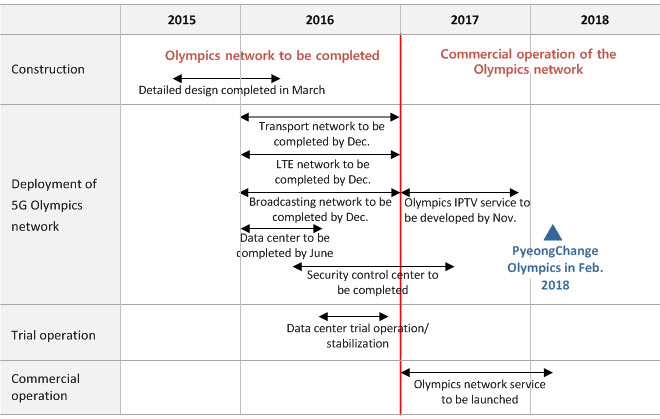Continuing exploring the future of video in the context of mobility and 5G, we are focusing Today in Holograms in light of the news out of South Korea that its No. 2 mobile operator KT Corp. is seeking leadership in both 5G and the hologram business. And it is waking the talk with ongoing holographic theaters. It is also touting state-of-the-art video services which include a “Hologram Live” Service.
The Business Case for Holograms: KT has been looking at holograms as part of a revenue diversification strategy, and ahead for the planned 5G commercialization in 2020. Back in 2014 KT opened the world’s first hologram performance hall, K-Live, in Seoul. The hall has since attracted more than 250,000 visitors, with 44% being foreign tourists, according to KT. Content wise, their strategy is to use well-known story plays into the holograms, and to raise awareness of the technology. Based on the success so far, the company is planning to expand the business opening hologram-devoted entertainment theaters nationwide, and expanding overseas.
KT is betting that the hyper-realistic, virtual content industry will be a key revenue source for 5G. “The 5G network infrastructure is essential to transmit high-resolution, high-capacity data in real-time anywhere,” KT said. The company is pushing ahead with a plan to demo 5G and its holographic capabilities at the upcoming PyeongChang Winter Games in 2018, for the first time in the world.

2018 Olympics Plan: KT will be the official network service provider of the 2018 PyeongChang Winter Olympics and plans to have the services featured at PyeongChang including a handful of other state-of-the-art services such as 360 degree virtual reality. As far as holograms, KT says that it will demonstrate the Hologram Live service. One of the capabilities of this service will allow athletes to conduct interviews straight from the ski slope through holograms.

South Korea Government is also helping to ensure that bandwidth demands for Virtual Reality, 3D-Video, IoT and such is readily available. At the end of 2015, it designmenated K-ICT unlicensed frequencies:
- 262-264 MHz (2 MHz bandwidth);
- 24-27 GHz (3 GHz bandwidth) in the extremely low band, and 64-66 GHz (2 GHz bandwidth);
- 122-123 GHz (1 GHz bandwidth); and
- 244-246 GHz (2 GHz bandwidth).
The 24 GHz bandwidth can work with small output radar and 5G mobile telecommunications repeaters. Ultra-high 60 GHz bandwidth will be chosen for uncompressed high-volume video and high-resolution short-range radar in the 5G era. Jin Sung-bae, Head of the Frequency Policy Department of the Ministry of Science, ICT and Future Planning says that their expectation is to see “… the birth of future frequency-based industries such as remote medical diagnoses based on visual telecommunication service and security checks.”
On the infrastructure side, and according to a Netmanias Tech Blog article, “KT is aiming to add 35,000 wired communication lines along the communication duct lines (1,391 km long) being placed across the town of the event. It also plans to install over 5,000 WiFi Access Points (APs), support 4G/5G/WiFi access, and deploy a mobile communication network capable of supporting up to active 250,000 devices concurrently.
“The company is also building a cloud-based data center to ensure more efficient and reliable mobile services through more stabilized networks even during traffic spikes with hundreds of thousands of concurrent users. The data center is scheduled to be completed in the first half of the year, and will become fully stabilized after trial operation in the second half of the year.”
For KT, both Holograms and 5G are technologies, in their infancy now, are meant to grow together and be ready for prime-time at the 2018 Olympics in South Korea. This “VR or Nothing” video gives the details
Resources: South Korea Frequencies for IoT and 5G, Netmanias
@elenaneira

